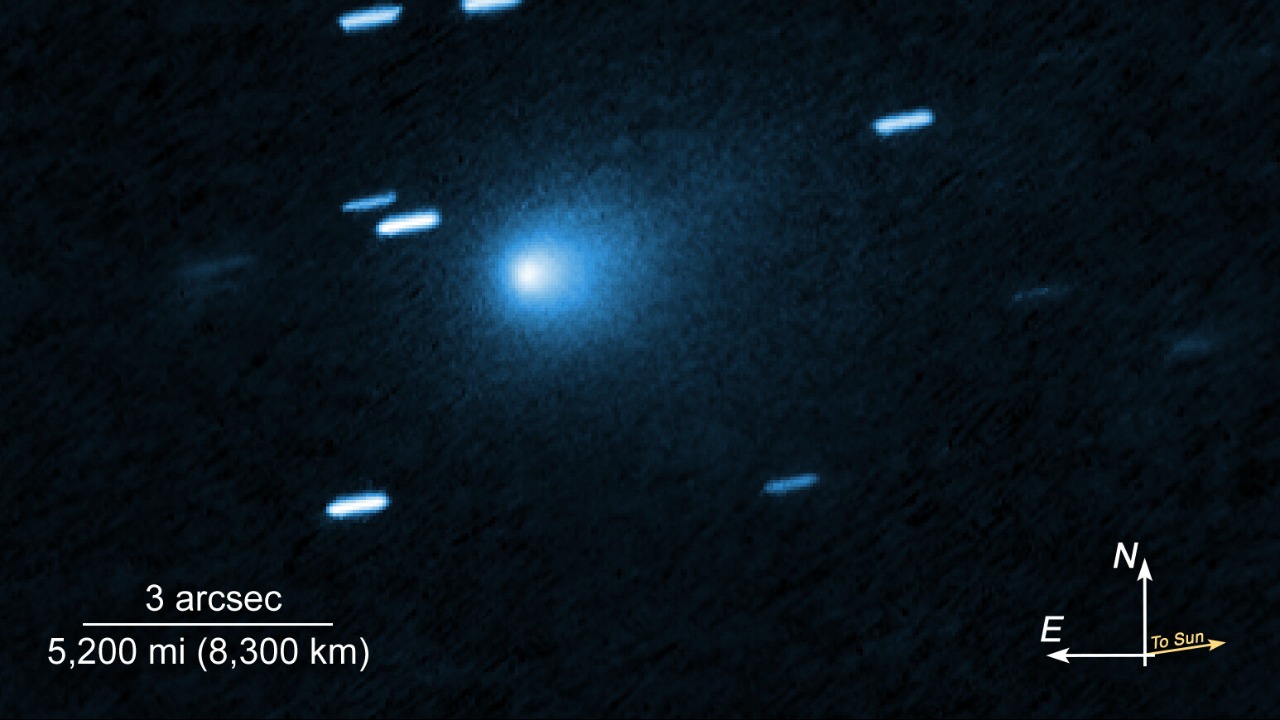
The interstellar comet 3I/ATLAS has potentially exploded near the sun, breaking into 16 pieces after its closest solar approach, known as perihelion. This intriguing event, observed between November 10 and 11, 2025, has sparked a flurry of scientific speculation, including theories involving mysterious jets and even a possible alien connection. The incident has further deepened the enigma surrounding the third confirmed interstellar visitor to our solar system.
Discovery and Identification of 3I/ATLAS
The comet, known as 3I/ATLAS, was first detected as an interstellar object based on its trajectory analysis. Its unique path through our solar system, characterized by high velocity and hyperbolic orbit parameters, confirmed its origin outside our solar system. The naming convention 3I/ATLAS links the comet to the ATLAS survey, the first to spot this celestial wanderer.
Trajectory Toward Perihelion
As 3I/ATLAS journeyed towards the sun, it reached a point known as perihelion, the closest approach to the sun. This intense solar encounter likely exerted significant thermal stress on the comet’s structure. Following this perihelion passage, signs of instability began to emerge, as per scientific assessments. Prior to this, imaging had shown the object in its intact form.
Observations Indicating Fragmentation
Post-perihelion telescope data suggest that 3I/ATLAS may have fragmented into 16 pieces. This hypothesis is based on observed changes in brightness and the detection of multiple fragments. Scientists have analyzed the object’s dimming and dispersal patterns to propose an explosion or breakup event. This potential disintegration was captured shortly after November 10, 2025, during ongoing monitoring efforts.
Hypothesis of an Explosion Near the Sun
The leading theory suggests that 3I/ATLAS exploded due to thermal stresses induced by its proximity to the sun. This theory is supported by sudden spikes in activity observed in the comet. Reports have confirmed the potential explosion of this mysterious interstellar object as a key interpretive framework for the event. The role of solar radiation in causing cometary outbursts is well-documented, drawing parallels to similar events observed in solar system comets.
Avi Loeb’s Analysis and Claims
Harvard astrophysicist Avi Loeb has proposed some intriguing explanations for the observed phenomena. Loeb’s assessment of the explosion focuses on the unusual dynamics observed in the comet’s final stages. He has pointed out the presence of mysterious jets emanating from 3I/ATLAS, which he argues deviate from typical cometary behavior. Furthermore, Loeb has speculated on a possible alien link, suggesting that the jets and breakup could indicate artificial origins rather than natural processes.
Implications for Interstellar Research
The fragmentation of 3I/ATLAS into 16 pieces provides valuable insights into the durability of interstellar objects under solar influence. This event raises broader questions about the frequency of such explosive events among extrasolar visitors. The timing of this event, in late 2025, marks a pivotal moment for updating interstellar detection protocols.
Upcoming Confirmation Efforts
Scientists are planning follow-up observations to verify the 16 fragments and assess whether the breakup was total or partial. Clearer images are expected in the weeks following perihelion, which will provide definitive data. However, tracking the dispersed pieces amid solar glare and their fading trajectories presents significant challenges.
More from MorningOverview